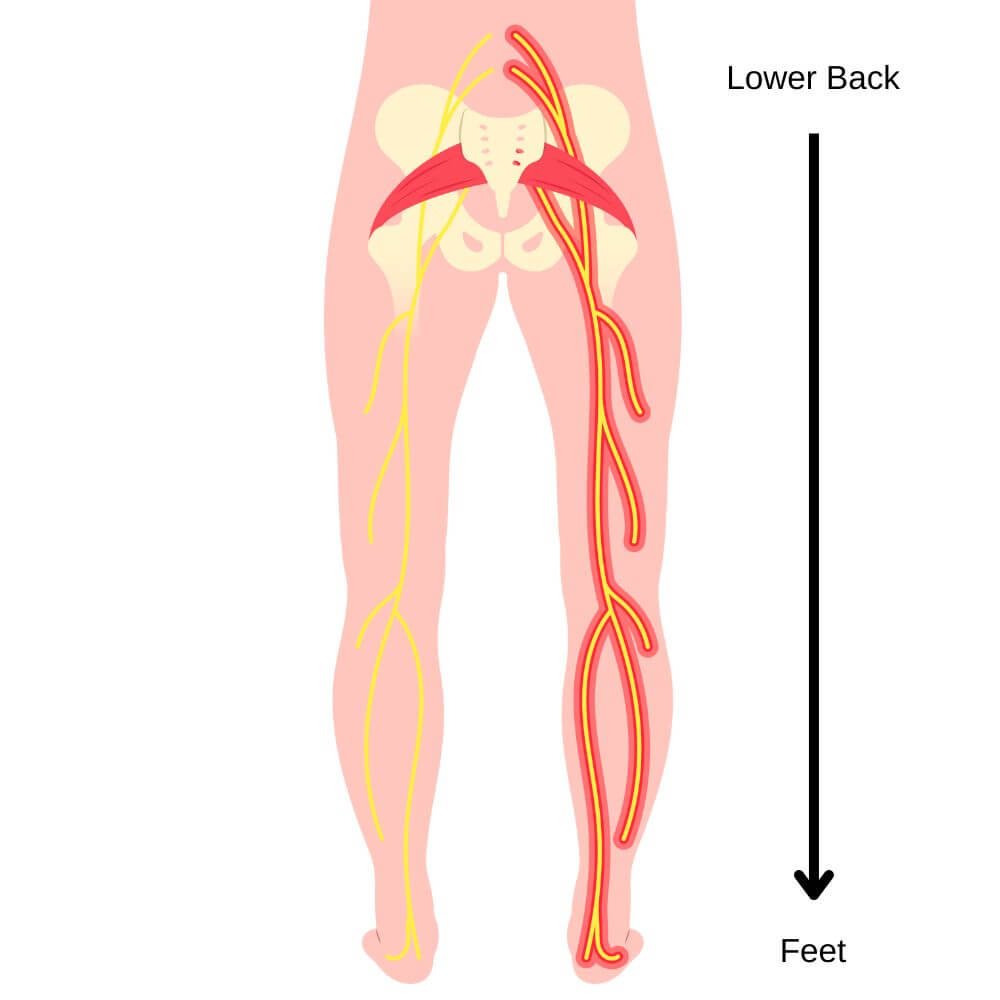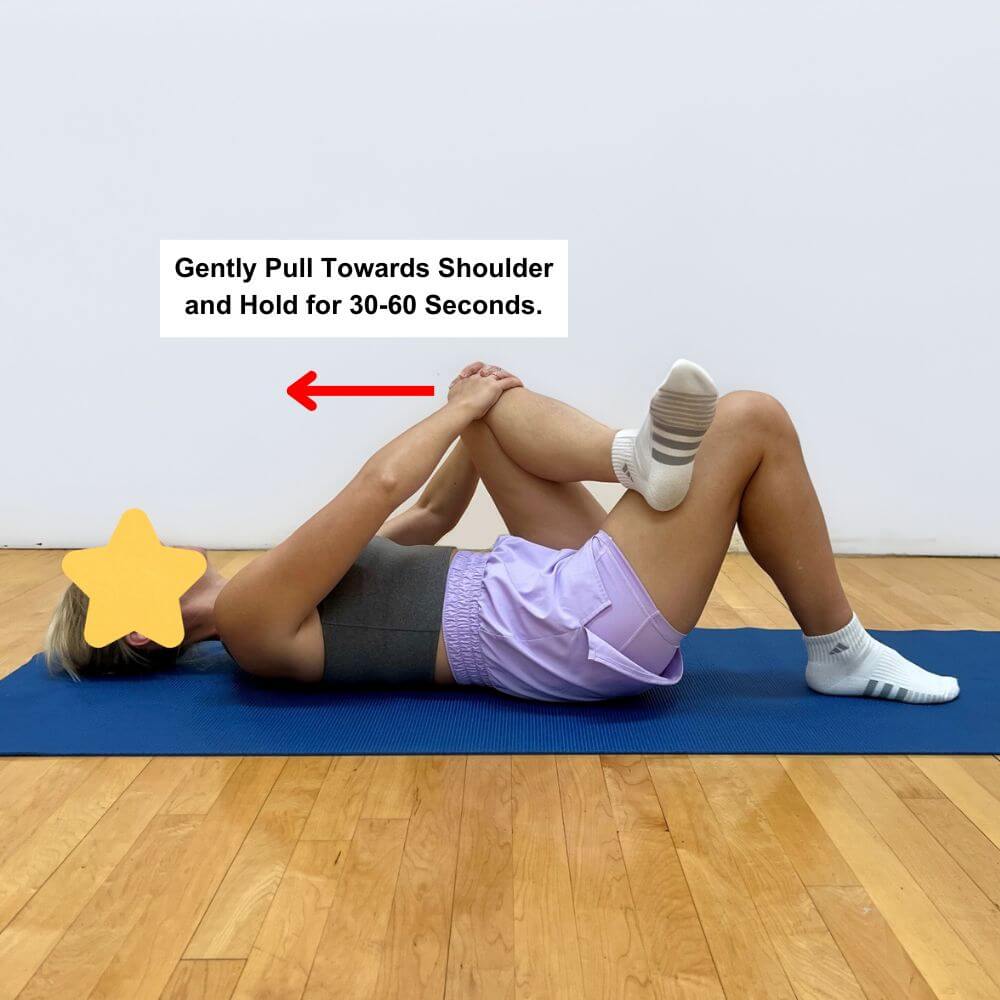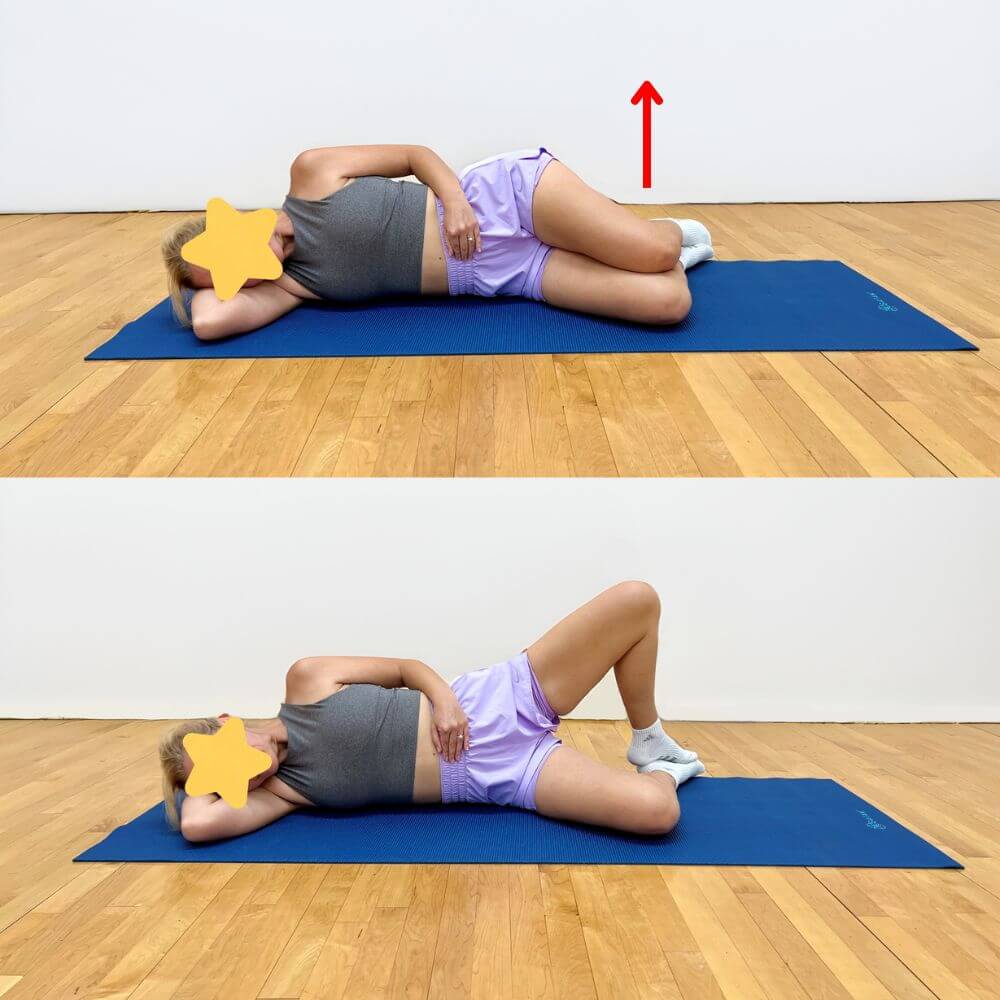free shipping desktop
Can Sciatica Cause Foot Pain?

“Sciatica” is a term many of us have heard of, and for those who have unfortunately had to endure the pain, it’s a term that probably brings some unhappy thoughts. Despite being a common condition, there is a great deal of misunderstanding among the general public about its origins, symptom variability, and treatment options.
Today, we’ll shed some light on this complicated condition and how it relates to foot pain.
What is Sciatica?

Sciatica is an umbrella term used to describe a condition in which pain and sensory symptoms travel along the path of the sciatic nerve. Typically, this condition is caused by compression somewhere along the nerve’s long route down the thigh, though the cause and location of that compression can vary depending on the person.
The compression occurs most frequently at a nerve root (where the nerve branches off from the spinal cord) or in the buttocks area due to pressure from the piriformis muscle, which sits on top of the nerve path.
The sciatic nerve is the largest and longest nerve in the human body. It starts in the lumbar and sacral spine and travels through the buttocks and down the back of each thigh before branching into multiple smaller nerves in the lower leg, ankle, and foot.
It plays an important role for both muscle contraction and sensation (via its terminal branches) in the lower parts of the body. For that reason, when it’s compressed it can cause a wide array of symptoms throughout one or both legs (though it is typically experienced on just one side), including muscle weakness, pain, tingling, and numbness.
Can Sciatica Lead to Foot Pain?
Since the sciatic nerve branches off into several smaller nerves that supply the lower leg, ankle, and foot with muscle control and sensation, compression anywhere along the nerve path can cause pain, weakness, tingling, numbness, burning, ‘pins and needles’, or other uncomfortable sensations nearly anywhere in the leg, including the foot.

Depending on the location of the sciatic nerve compression and the severity of a person’s sciatica, they may experience multiple symptoms that travel all the way down the leg, or they may experience all or most of their symptoms in a specific location. For many, this involves pain in the sole of the foot and/or the top of the foot. In fact, foot pain is a common symptom associated with sciatica.
The Role of Orthopedic Shoes in Managing Sciatica-Related Foot Pain
Orthopedic shoes can provide multiple benefits for those with sciatica-related foot pain. The most obvious is that they provide excellent support and comfort to alleviate foot pain through its features designed to comfort and support your feet in a therapeutic way.
However, the benefits of orthopedic footwear extend deeper than just comfort and support. They also utilize specific designs to optimize the alignment of the spine, pelvis, hips, knees, ankles, and feet. The human body is essentially a chain of interconnected structures that need to work harmoniously to ensure alignment to properly support the weight of the body.
For example, poor spinal alignment directly affects the alignment of the pelvis, which affects the alignment of the hips, which affects the alignment of the knees, and so on. Prolonged stress on the structures affected by misalignment can lead to issues anywhere along the “chain.”
By improving lower extremity and spinal alignment, orthopedic shoes not only provide exceptional comfort, but they also help in managing sciatic pain by reducing strain on the spine and nerves. This makes them beneficial for both short- and long-term pain management, especially when foot mechanics, like flat feet, contribute to misalignment and pressure on the sciatic nerve.
Orthopedic Shoe Features to Relieve Sciatica Pain
When choosing shoes for relief of sciatica pain, it's important to look for certain features that can provide support, comfort, and promote proper alignment to reduce pressure on the sciatic nerve. Here are the top shoe features to consider:
- Cushioning and Shock Absorption
Shoes with excellent cushioning help absorb shock and reduce the impact on your lower back, hips, and feet. Look for shoes with foam or gel insoles that cushion your steps, especially during extended periods of walking or standing. Good shock absorption can minimize the jarring that travels up your legs and into your sciatic nerve, helping alleviate pain.
- Arch Support
Proper arch support is crucial for maintaining the alignment of your feet, legs, and lower back. This can help reduce the stress placed on the sciatic nerve by promoting a balanced distribution of weight. Orthopedic shoes with built-in arch support or removable insoles that accommodate custom orthotics can provide relief by addressing the underlying issues related to sciatica, such as overpronation or flat feet.
- Firm Heel Counter
A firm heel counter stabilizes the rearfoot, reducing excessive movement and supporting proper foot alignment. This stability helps prevent excessive strain on the sciatic nerve, particularly in cases where overpronation or flat feet contribute to the discomfort. Look for shoes with reinforced heel counters that limit unwanted side-to-side movement.
- Rocker Sole
Shoes with rocker bottoms or soles promote a smooth, natural gait, reducing strain on the feet, legs, and lower back. A rocker sole can help relieve pressure on the forefoot and heel, easing the load on the sciatic nerve by facilitating a rolling motion during walking.
- Wide Toe Box
A spacious toe box allows your toes to spread out comfortably, reducing pressure on the foot and promoting better balance. Shoes with a wider toe box can be especially helpful if your sciatic pain affects the lower leg and foot, as it provides more room for movement without pinching or compressing sensitive areas.
- Lightweight Construction
Lightweight shoes reduce the amount of energy expended while walking, which can reduce fatigue and minimize stress on the lower back and legs. This can be particularly beneficial for individuals with sciatica, as it helps alleviate strain on the nerve pathway.
By selecting shoes with these features, individuals with sciatica may experience significant relief, improved posture, and enhanced comfort during daily activities. Proper footwear can significantly help in managing the symptoms of sciatica and maintaining overall foot health.
Styles from orthopedic shoe brands like Orthofeet, Drew Shoe, and Propét Footwear offer styles with some or all of these features mentioned above.
Exercises and Stretches to Alleviate Sciatica Pain
The best exercises and stretches for sciatica pain will differ depending on the location of the nerve compression. If you believe you have sciatica, it’s best to consult with your doctor or physical therapist to determine the source of the pain, contributing factors, and rule out other diagnoses.
For those whose sciatica is determined to be a result of compression in the gluteal region (buttock area), often referred to as piriformis syndrome, your doctor or physical therapist will likely have you start with some of the following exercises and stretches:
Piriformis stretch

Lie on your back with your knees bent and feet flat on the ground. Cross one leg over the other so your ankle is resting just above your opposite knee. Grab your crossed leg near the knee and gently pull it towards your opposite shoulder until you feel a light to moderate stretch in your buttocks. Hold for 30-60 seconds, then repeat on the other side.
If you have piriformis syndrome type sciatica, increasing muscle length of the piriformis muscle can be very helpful in reducing your symptoms. This is because a hypertonic, short, or inflamed piriformis muscle is often the culprit of sciatica, as the sciatic nerve passes through, or just underneath, this important muscle.
Remember, overstretching can make your symptoms worse, so be sure that you keep this stretch light to moderate intensity and gradually increase the stretch as your symptoms subside over time.
Sciatic Nerve Glides

Start by sitting on the edge of a bed, chair, or couch. Tuck your chin into your chest and slouch your back and shoulders forward. Straighten out the leg that your pain is in with your toes pointed away from you. Then, look up with your head while bringing your toes towards your body. Slowly alternate pointing your toes while tucking your chin to your chest, followed by looking up with your head and bringing your toes towards your body. Complete 15-30 repetitions each direction.
You should feel a slight pulling sensation down the back of your leg, but it should remain mild. As always, modify or stop the exercise if your symptoms worsen.
Clamshells

Lie on your side with your legs stacked on top of one another and your knees bent to about 90 degrees. Without allowing your pelvis to roll backward and while keeping your heels together, lift the top knee off the bottom one as high as you can without losing proper alignment. Slowly lower your top leg back to the starting position. Repeat for the desired number of sets and repetitions. Perform on both sides.
This exercise can optionally be performed with a loop resistance band just above the knees.
When to Seek Medical Attention for Sciatica
You should seek medical attention if you experience severe or unrelenting pain, numbness, tingling, or burning down one or both legs that does not improve with changes in position or prevents you from putting weight through the affected lower extremity.
While mild-to-moderate symptoms may be able to be managed conservatively and independently, you should also seek medical attention if your symptoms are not showing gradual improvement over the course of 8-12 weeks maximum. However, since sciatica can stem from multiple factors, getting your symptoms addressed by your doctor much sooner than 8-12 weeks is typically recommended.
About author:
Troy Hurst, PT, DPT, is a licensed physical therapist who received his Doctor of Physical Therapy degree from Carroll University in 2017. He specializes in the treatment of orthopedic and vestibular conditions, and has been a freelance medical writer since 2018.

